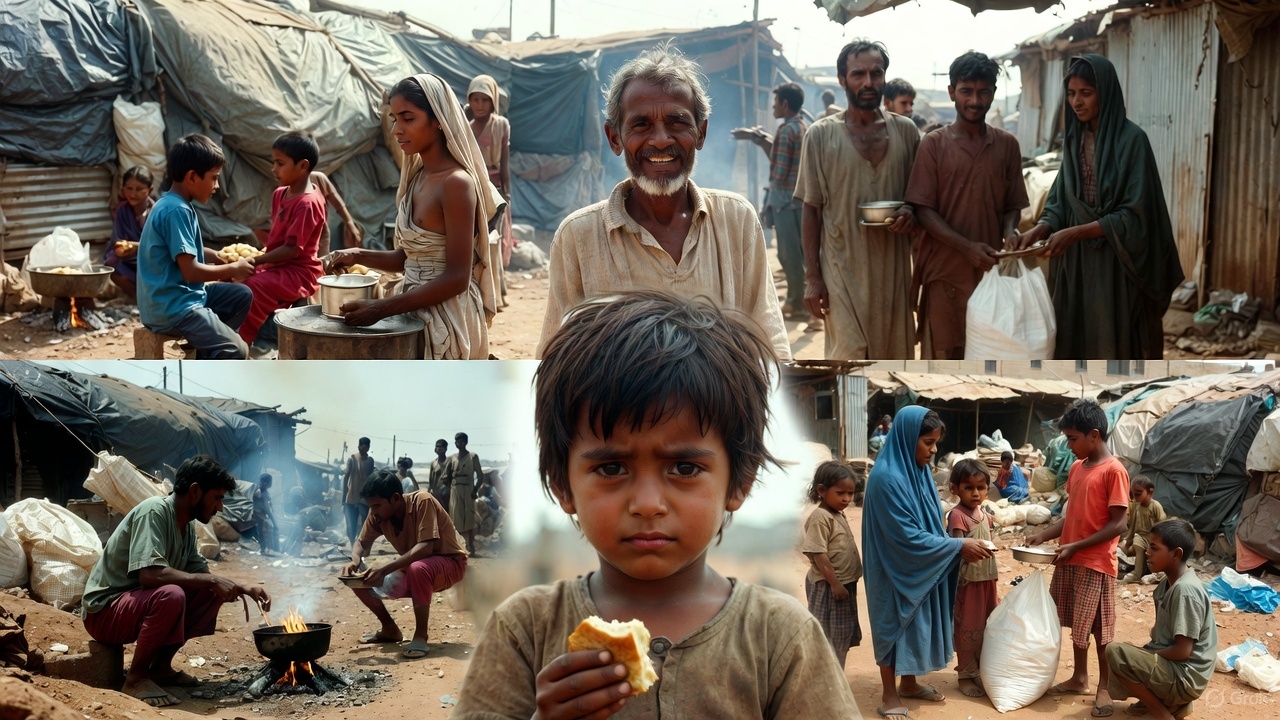The United Nations World Food Programme issued a warning on Tuesday, stating that the world is experiencing an intensifying hunger crisis.
They attributed this to a severe gap between available resources and the necessary aid, primarily caused by significant cuts in humanitarian funding.
The World Food Programme (WFP), based in Rome, has forecast in its 2026 Global Outlook that 318 million people are projected to experience crisis levels of hunger or worse next year.
This figure is more than double the number recorded in 2019.
Looming shortfall
Due to a decrease in humanitarian funding, the WFP intends to provide assistance to approximately 110 million of the most vulnerable people in 2026, which is projected to cost $13 billion, according to the outlook.
However, current forecasts indicate that the agency may only secure about half of the necessary amount.
“The world is grappling with simultaneous famines, in Gaza and parts of Sudan. This is completely unacceptable in the 21st century,” WFP Executive Director Cindy McCain said in a statement, which was quoted in a Reuters report.
Hunger is becoming more entrenched. We know early, effective solutions save lives, but we desperately need more support.
Reduced donor contributions
The WFP, the largest humanitarian organisation addressing hunger and food insecurity globally, is currently facing significant financial headwinds that threaten its operations.
The most substantial challenge stems from reduced contributions from its primary benefactor, the US.
Under the administration of US President Donald Trump, there was a notable policy shift leading to substantial cuts in foreign aid allocations.
This decrease in funding from the US, which has historically been the WFP’s biggest financial supporter, has created a major gap in the organisation’s budget.
Compounding this challenge, other significant international donor nations have either implemented or publicly announced similar reductions in their foreign assistance budgets.
This coordinated or parallel reduction in aid from key global players places immense pressure on the WFP’s capacity to respond to humanitarian crises, deliver essential food assistance, and sustain long-term development programs in vulnerable regions across the globe.
The confluence of these reduced commitments means the WFP must increasingly stretch its resources, potentially leading to difficult decisions regarding which populations or emergencies receive priority funding.
The WFP anticipates a significant reduction in funding for 2025, projecting a budget of only $6.4 billion.
This represents a 40% year-on-year decrease from the $10 billion received in 2024.
The expected shortfall will likely impact the WFP’s ability to provide crucial aid globally.
WFP’s plans
The organisation anticipates that conflict, extreme weather, and economic instability will exacerbate severe food insecurity.
Although WFP’s famine prevention initiatives averted mass starvation in 2025, the overarching crisis remains unabated.
The agency further announced a comprehensive plan to address food insecurity.
This includes the provision of emergency food and nutrition aid, initiatives to boost community resilience against food shocks, and technical assistance aimed at strengthening national systems.
Furthermore, the agency will utilise technology to enhance overall efficiency.
“WFP provides a critical lifeline to people on the frontlines of conflicts and disasters, and we are transforming how we work to invest in long-term solutions,” McCain added.
Ending entrenched hunger demands sustained support and real global commitment.
The WFP called on governments and donors to dedicate resources to effective, established methods for reducing hunger, bringing the world closer to achieving the goal of zero hunger.
The post World Food Programme warns of intensifying global hunger crisis amid severe funding cuts appeared first on Invezz

